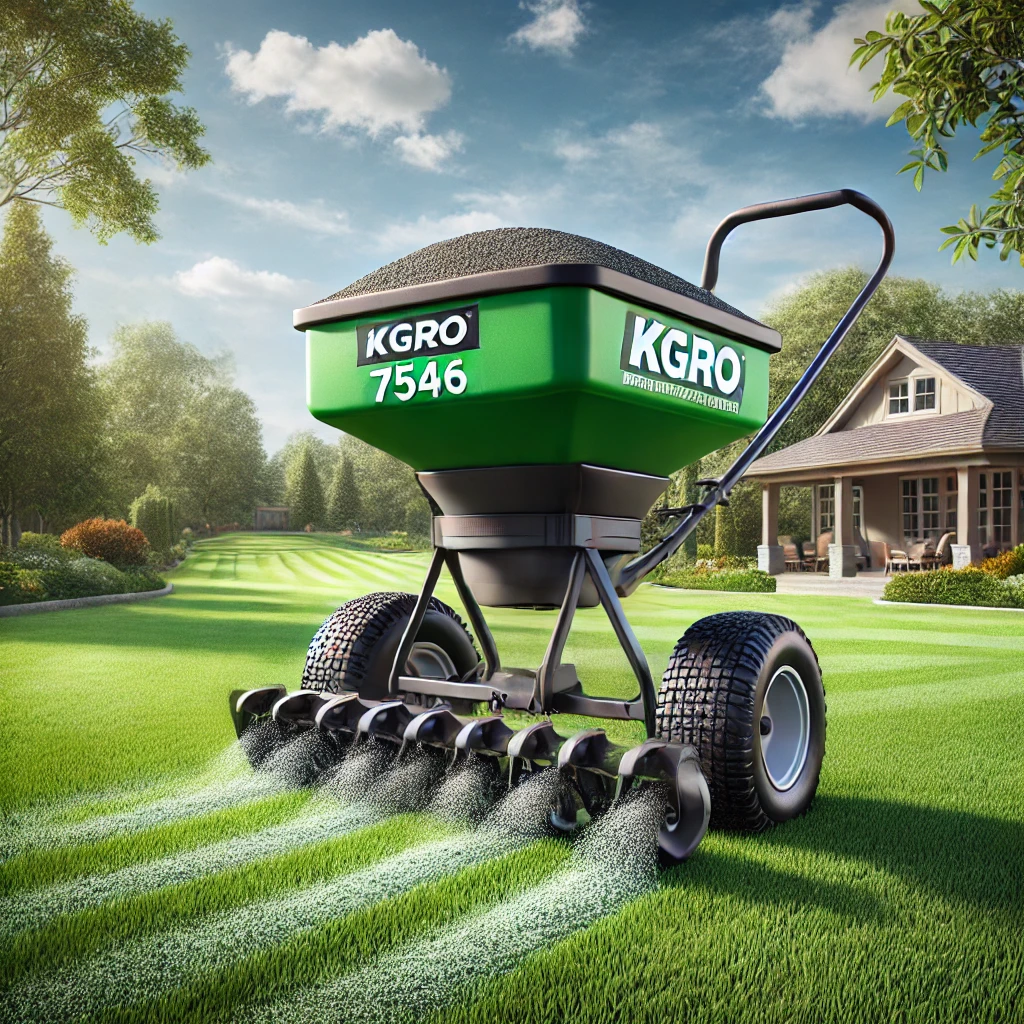Creating a Masterpiece on Your Lawn: How to Craft Unique Striping Pattern
Lawn striping is an art that takes your yard’s appearance to another level. The organic expanse of a lawn can be transformed in various ways, from simple stripes to complex geometric shapes.
In this comprehensive guide, you will discover how to paint the grass on your lawn with unique stripes that will make it stand out in your neighborhood.
This is your step-by-step manual designed specifically for homeowners who love gardening and professionals who are ready for innovations.
The Significance of Lawn Striping and the Quest for Uniqueness
The well-trimmed, vibrantly striped lawns are one element that distinguishes professional landscaping from others. What makes this artwork so important?
Because there is more than just beauty, it shows how healthy the grass is, helps it grow evenly, and enhances its texture. However, the uncommon patterns created on the lawns capture people’s attention most. These unusual designs make your property stand out, add character, and reveal personality.
Creating a unique striping pattern is akin to signing your masterpiece. It says volumes about your cleverness and high level of accuracy if you produce a distinctive pattern while stripping your lawn.
Different patterns integrated into the landscape create beautiful scenes and talking points for visitors or neighbors, thereby inspiring individuals too. The quest for uniqueness lies at the heart of lawn striping as an art.
Craftsman Lawn Mower Model 917
The Creative Process Unveiled
Designing a unique pattern on your lawn can be accidental as well as ordinary. This process requires consideration of other things such as inspiration, precision, and creativity. To begin with a blank canvas, start with an entire green space that becomes your artwork.
The initial stage involves determining what you want and why. Do you desire something majestic inspired by travel or something different to go along with home architecture?
Having collected inspiration, move on to conceptualization, where rough sketches come alive through situating thoughts in writing.
One needs to consider the landscape in the yard at this point—every slope, every structure, and anything that can be incorporated into the plan. Next is preparation, which is essential to ensuring your design comes out perfectly, like laying the groundwork for a perfect photo shoot.
The stripes have to be clean, and even the mowing height should not change. The creative process therefore involves looking for inspiration, making plans, preparing grounds, executing, and then fine-tuning.
Drawing Inspiration from Diverse Sources
The mind of an artist is always open to ideas, just like a lawn-striping enthusiast’s. One can get inspiration from any source, from neat lines of vines in the vineyard down to bold stripes of zebras.
They could also get it from a rug with patterns on it, like how football ground looks or the tracks used in car racing. Natural connections are very important when it comes to field art; hence, organic patterns such as those created by herds grazing grounds make incredible translations.
Brainstorming and Sketching Potential Patterns
This is starting from something you were inspired by; ideas would start coming in. At this point, there is no bad suggestion, and so every thought should be put on the table. You may opt for a spiral approach, or else you may choose a chessboard that looks similar to that of an estate’s garden.
It’s not unlikely that many of these won’t make it because what they are looking for is this high drive for creativity when nothing can hold it back.
It is important to narrow down these ideas before sketches can be made, as they may be like a sketchpad for creating a garden labyrinth or even a mural.
Considering Landscape Layout and Features
There isn’t any such thing as your lawn being separate from everything else nearby on your property. The striping designs need to be informed by exactly how you have planned the yard and what fills it up.
For instance, if you have just a square lawn, then probably a simple grid pattern would best show the symmetry about it, while the curving wave of the line resembling a snake laid along the plot’s curve very smoothly fits into this kind of arrangement.
Trees or flower beds can either obstruct them or become an integral part of their design to bring out their presence in each case.
Choosing Between Simple and Intricate Designs
When one tries out various patterns that will fit with his or her yard layout and features, where he or she wants to fall in terms of simplicity versus intricacy should also come into play.
A simple two-directional pattern has been widely considered to represent a modest classic style that automatically elevates even neighborhood lawns.
On the other side, more complex patterns could require much time as well as patience while one has the necessary skills, but after all the efforts put into them, one can achieve the most magnificent gardens ever seen before.
Therefore, choosing what works best based on once-mowing experience plus schedule becomes crucial at this particular level.
Exploring various techniques for effect creation
Different mowing techniques will lead to diverse visual effects. Among the most critical decisions are the use of a roller, a striping kit, and an adjustable grass-propping deck. How you pass through your lawn and how often you do so determines what pattern your stripes will have.
A diagonal line can imply a sense of royalty, while concentric circles give off a playful mood in the yard. In addition, the distinctiveness and durability of such patterns can be influenced by several factors, including blade sharpness, type of lawn mower, and mowing height.
Experimentation and Customization for Personalized Patterns
This is where experimentation comes in to make it yours. It might be worth testing different methods in one small area before committing to them completely.
You simply had your evergreen classic stripe, but with just a slight change in alignment or speed, you broke out of it, creating an altogether unique viewing experience.
This part, where you tailor it based on already-known models, works as the link between a known pattern design and something new to you.
Preparation is key.
To turn mowing into artful painting with a brush instead of mowing a yard straightforwardly, as many people believe.
Before starting to fill up your lawn with all sorts of artwork, make sure that the grass is healthy enough for this purpose and that its height is optimal.
Edge around the edge of your grassed area so that there are no fallen leaves or other waste remaining within it at all. Where necessary, remove seats or machinery from your yard that interferes with lines drawn on turf surfaces.
Setting up Equipment for Optimal Artistry
The artist won’t work with dull or impractical tools, and neither should you. Before actually mowing, it is important to prepare your studio.
This includes making sure that the mower you use is up to par, whether a commercial-grade riding mower or the old-fashioned push type.
Make sure that there are proper striping kits or rollers attached. This combination of the correct equipment and strategic planning will ensure crisp lines and curves as well as rich colors.
Methodical Execution of Your Chosen Pattern
With your layout prepared and your equipment set up, it’s time to start painting with grass. Most striking visual patterns come from mowing grass in different directions, creating light and shadow play that fool the eye into perceiving depth.
Whether it’s simple two-stripes or expanding concentric ovals across your lawn, a slow, constant pace will ensure an even pattern.
Consistency in Mowing Direction and Speed Is Paramount
If you want your pattern to shine as it should, consistency is king. You can’t go wrong if you’re on a steady line, at least for the main strokes.
However, each method has its aesthetic payoffs; take some time to figure out what works best with your particular lawn.
And just like an artist’s brush, how fast the mover goes depends on what it looks like, too; too fast and stripes might become less defined, while too slow may lead to ruts in your design.
Periodic assessment and adjustments are vital.
Stop every once in a while to look at how far you have gone. What appears normal from above may not be so when seen from ground level.
Now is when you should change your tactics perhaps. Maybe there’s excessive space between stripes or they are too close together?
Otherwise, there could be an unforeseen spottiness that needs smoothing out. Thus, the best patterns often result from meticulous tactical adjustments along the line.
Regular Maintenance for the Longevity of the Portrait
It’s satisfying to create a lawn pattern, but without proper maintenance, its beauty is short-lived. Grass grows like any other living organism, and for the pattern not to go away soon, you have to take care of it.
To maintain properly defined stripes, you will need to mow regularly while making sure your mower’s blades are razor-sharp.
On top of that, artistic landscapes do not exist by themselves, so if you also keep cohesive and complementary arrangements elsewhere in your garden, this will have a greater impact on your stripe pattern.
Adding Extra Flair With Contrasting Grass Types
Mother Nature likes diversity, and so should you when trying to make your stripes even more outstanding. You may introduce various grass types or different heights of cut within one design, which can produce amazing results.
For instance, think about how a dark green fescue would stand out against a lighter Kentucky bluegrass or rye juxtaposed with plain white clover. The more diverse the colors on your ‘paint palette’, the better experience it offers.
Incorporating Additional Landscaping Elements
The stripes alone are important, but they make more visual impact when accompanied by other elements.
Consider how your stripes intersect with walkways, garden beds, hedges, or pools. Each element should enhance the others, contributing to greater depth and coherence in the overall landscape design.
Polishing Edges for a Refined Finish
The edges of your lawn resemble the frame of a portrait, and every masterpiece deserves an excellent frame.
Neatly maintained edges not only hold the design together visually; they also prevent it from overflowing into areas where it should not be. By regularly trimming and shaping these edges, you will give your design a professional touch.
Implementing proper lawn care practices
To maintain the longevity of striping art, regular lawn care is necessary. This entails watering your lawn adequately, fertilizing as required, and aerating the soil to prevent compaction.
Healthy green grass provides the best canvas for your designs, maintaining their shape and color proudly. Don’t just take care of it; pamper it because, after all, it’s art.
Addressing Seasonal Changes and Growth
Patterns that look perfect in spring may not look so good during hot summer days. As seasons change, so does the growth rate and direction of grass, as well as how the sun casts on your lawn.
Stay flexible enough to accommodate this change by changing patterns or maintenance routines over time.
Periodic Pattern Refreshment
To maintain fresh and attractive designs, think about changing them periodically. This is especially crucial if initially, you had designed mowing to take place over some duration in one direction since mowing along one line can compact it, hence weakening turf health status. A seasonal overhaul could be just what your lawn needs to stay healthy and for your artwork to stay breathtaking.
Dealing with Uneven Terrain and Equipment Issues
When mowing stripes across a flat field feels like painting by numbers for artists playing with fire, then the latter might apply to steep terrain.
On unsteady ground, however, a sure hand and versatile machinery are your best friends. Each new hill, each bump in the road, is an opportunity for a unique perspective.
For the artist, even equipment issues are just another brushstroke in lawn striping’s grand tableau.
Repairing damaged patterns
Sometimes, no matter how strong or magnificent your sandcastle is, it will be blown away by the wind. Likewise, your delicate patterns can be spoiled by a heavy downpour or unexpected wear and tear.
At this point, protective gear should be worn, sleeves rolled up, and damage assessed for repair work to begin immediately without any delay. It is better to do it quickly because further damage could spread or make future repairs more difficult.
Capturing Photographs of Finished Patterns
Recording these artworks not only helps you appreciate them but also enables others to see what you have done. Different angles and timings of photographs present a variety of insights on the impact of design. They also serve as sources of knowledge for your forthcoming creations.
Sharing Experiences and Tips with Others
Your experience in developing unique stripe designs could help others who may be starting their own projects. Why not share your ideas and suggestions through social media, forums, or the local horticultural society? The art of lawn striping is a communal effort, with your input contributing towards a shared passion for distinctive outdoor aesthetics.
Encouraging Creativity and Experimentation
In reality, this guide is more about best practices than a set of rules. Your lawn is limited only by your imagination, and it’s a platform for you to experiment and innovate. Encouraging other people to use garden design as an outlet will result in a livelier community of turf artists.
Conclusion
Lawn striping is the union of precision and creativity—deliberate execution infused with grand vision. This uniqueness in pattern exhibited on your stripes mirrors both your preference for and commitment to beautiful outdoor space landscaping.
There are few things so pleasant to behold as one’s lawn when looking out one’s windows that no one else has conceived; it speaks volumes without saying anything about the aesthetic love or work that you’ve put into it. Now go forth into your yard—make it the greatest gallery the neighborhood has ever seen.
FAQs
Question: How do I create unique lawn patterns?
Answer: Try varying mowing directions; you can have straight lines, curves, or even diagonals. The idea here would be to vary grass lengths for contrast while additionally using striping kits to produce defined lines.
Question: What tools are needed for creative lawn striping?
Answer: For creative lawn striping, you’ll need a lawnmower with a roller attachment that flattens specific directions of grass-making patterns. Besides this, flags or strings can be used to guide the mowing path with intricate designs.
Question: Can I combine different mowing techniques for variety?
Answer: Yes, mixing different mowing techniques adds variety in terms of what type of lawn patterns are seen. For instance, you might alternate between straight lines and curves or use checks to make your design more visually interesting.
Question: How do I maintain intricate lawn designs?
Answer: To keep intricate lawn designs, ensure a proper height is maintained by mowing regularly so that the lines remain crisp and sharp. Also, avoid high traffic volume on any patterned parts and use edging tools along the borders as required.
Question: Are there eco-friendly options for creative lawn care?
Answer: Yes, there are eco-friendly options for creative lawn care. For example, consider using organic fertilizers and natural weed control measures instead of artificial ones that may damage the environment. Furthermore, sustainable turf management practices such as water conservation through the adoption of indigenous species help foster sustainability.
Question: How do I make my lawn stripes more defined?
Answer: To make your stripes clearer in the grass, have very sharp blades on your mower. When cutting in straight lines with a roller attachment, flatten it one way and other times, not giving contrast between light and dark strips. Mow at a consistent speed and overlap each pass slightly for uniformity.
Question: How do you make a lawn pattern?
Answer: To create a pattern on your lawn, the first thing you need to do is draw it out on paper in order to guide your layout. After that, use a mower with a roller attachment to mow sections of your lawn following the pattern outline. When you just take your time and ensure that you are mowing in one direction, then you will make nice, crisp lines and shapes.
Question: How do you stripe an odd-shaped lawn?
Answer: Striping odd-shaped lawns follows the same ideas as striping regular ones. Divide the lawn into smaller parts and mow each part separately, going along with its shape contours. To be consistent, always follow marking flags or strings, which will act as guidelines for the straight walking paths of a mower.
Question: How do I make my grass lines different colors?
Answer: If you want to have grass lines with various colors, then consider overseeding your yard with different types of grasses that have contrasting hues. For a temporary change in color within grass lines, you may also purchase non-poisonous paints for lawns or environmentally friendly coloring agents. Just use a sprayer to apply this paint or dye according to the required patterns.











Leave a Reply